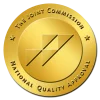Suicidal Thoughts
Treatment for Suicidal Thoughts
It’s important to understand that you are not alone if you have experienced thoughts of suicide at some point in your life. It’s actually common. Butwhen these thoughts become pervasive and prevent you from getting any enjoyment out of life, you need to find help. At Palms Behavioral Health, our mental health professionals offer compassionate, intensive care for adolescents, adults and seniors with suicidal ideation or thoughts of suicide. We understand that suicidal thoughts or behaviors may stem from underlying conditions such as depression, hopelessness, severe anxiety, insomnia, or panic attacks and we take a holistic and individualized approach to healing that addresses the crisis at hand.

FOR IMMEDIATE HELP
Dial 9-8-8 for the Suicide & Crisis Lifeline. This is a national network of local crisis centers that provides free and confidential emotional support to people in suicidal crisis or emotional distress 24 hours a day, 7 days a week in the United States.
Suicide Risk Factors
Though risk factors do not cause or predict suicide, they may make it more likely that an individual will consider or attempt suicide. Risk factors for suicide may include:
- Mental disorders, particularly mood disorders
- Hopelessness
- Impulsive and/or aggressive tendencies
- Major physical or chronic illnesses
- Previous suicide attempt
- Family history of suicide
- Recent job or financial loss
- Recent loss of a relationship
- Easy access to lethal means
- Local clusters of suicide
- Lack of social support and sense of isolation
- Stigma associated with asking for help
- Lack of health care, especially mental health treatment
- Cultural and religious beliefs, such as the belief that suicide is a noble resolution of a personal dilemma
- Exposure to others who have died by suicide (in real life or via the media and Internet)
These symptoms aren’t exclusive to heroin use, but if your loved one has a history of substance abuse and you suspect heroin use, get them help before it’s too late. Your suspicions are likely correct.
What To Watch For
A person experiencing thoughts of suicide may display the following signs and behaviors:
- Threatens to hurt or kill oneself
- Attempts to access weapons, medication, or other means of suicide
- Talks or writes about death
- Exhibits revenge-seeking behavior
- Talks about feeling trapped
- Talks about having no purpose
- Withdraws from friends, family, school, work, or other important relationships
- Engages in risky behavior

Behavioral Effects of
Heroin Addiction
As the addiction to heroin progresses, a person commonly begins to show behavioral inconsistencies, including:
- Lying / Theft
- Substantial increases in sleeping
- Incoherent speech, rambling
- Lack of pride in personal hygiene and appearance
- Sudden distance from friends and family
- Borrowing money
- Extreme mood swings, manic behavior
- Emotional projection

